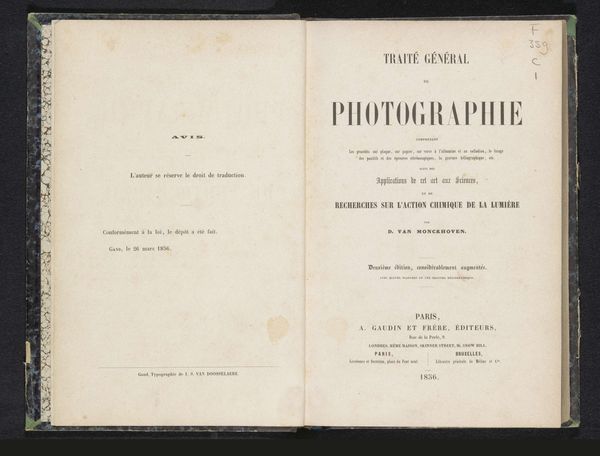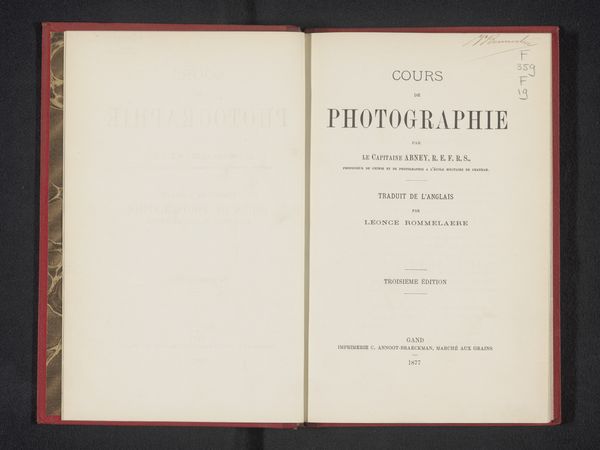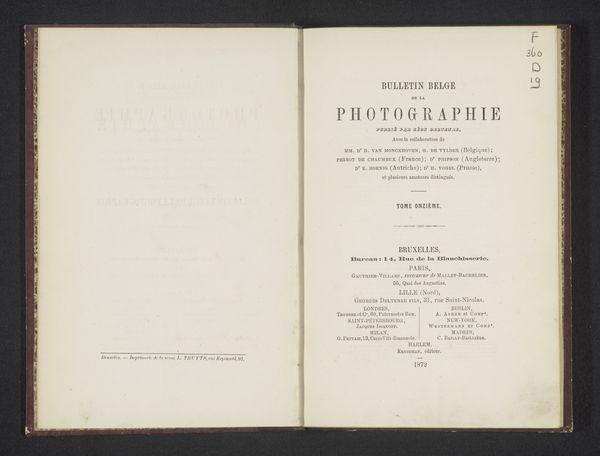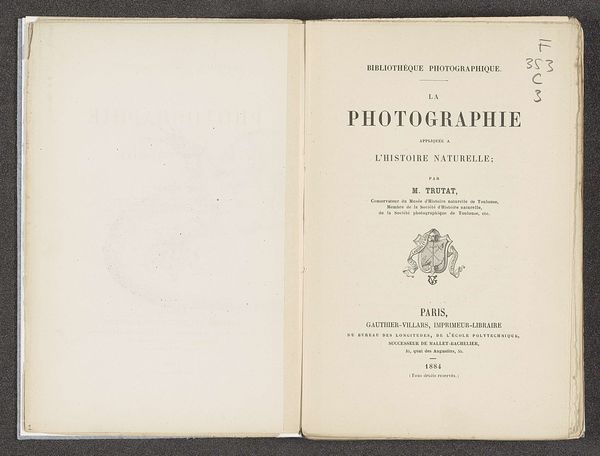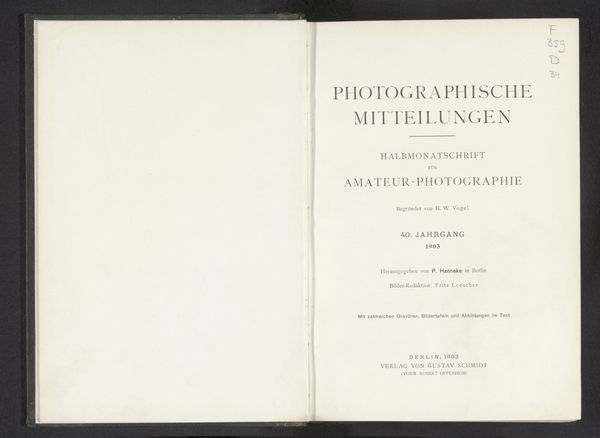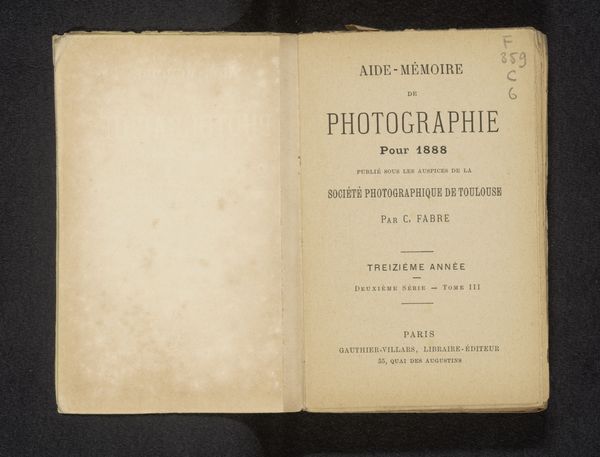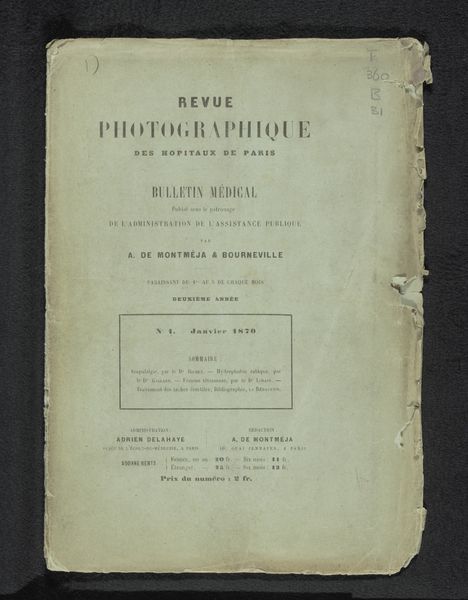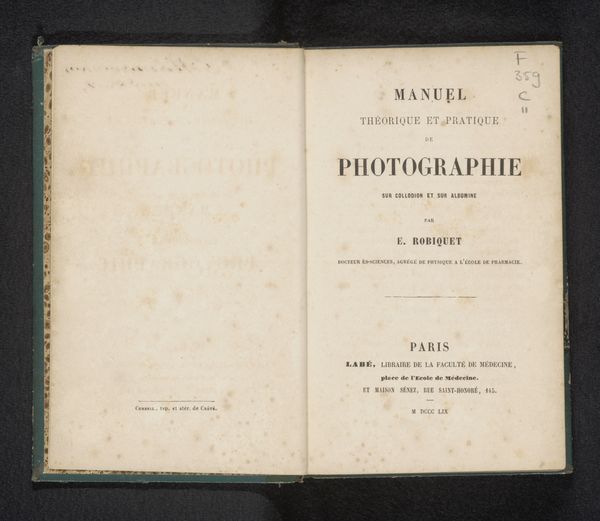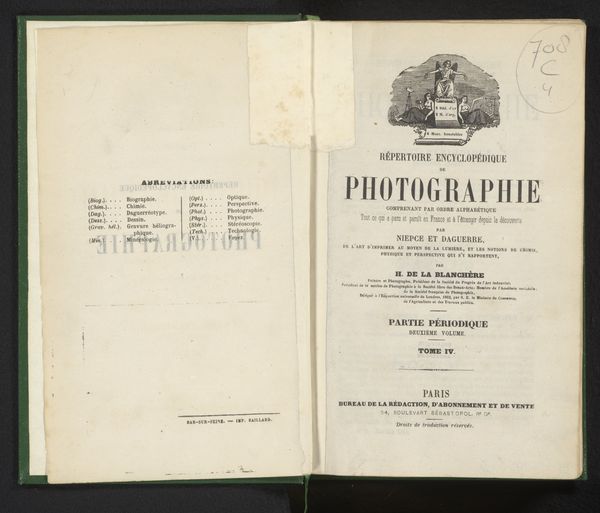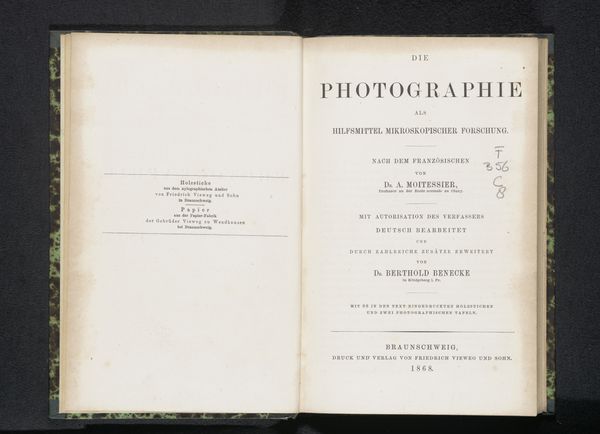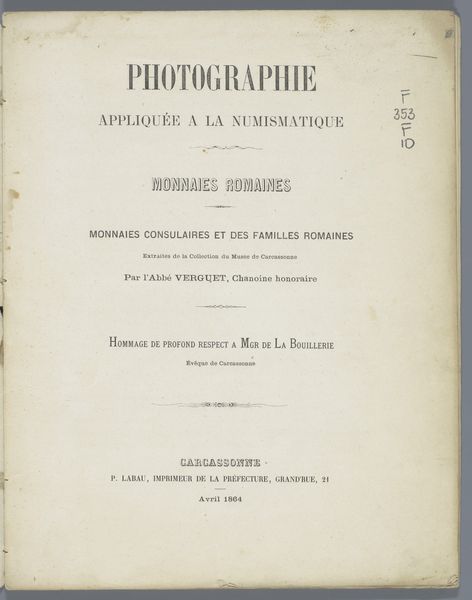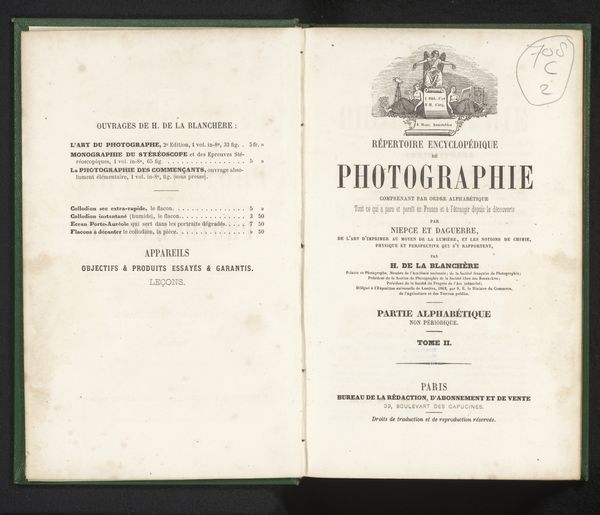
graphic-art, print, photography
#
graphic-art
# print
#
book
#
photography
Dimensions: height 248 mm, width 185 mm, thickness 25 mm
Copyright: Rijks Museum: Open Domain
Curator: This is the title page of "La Photographie Judiciaire" from 1903 by Rodolphe Archibald Reiss. It is a print and photography based graphic art piece, specifically a book. What strikes you initially about it? Editor: It evokes a sense of somber authority. The stark, simple layout— the large sans-serif typography gives a sense of modernity juxtaposed against what appears to be older world heraldry on the frontispiece. It promises objective truth delivered through technology. Curator: Indeed. Reiss was a pioneer in forensic science and criminology, advocating for using photography in crime scene investigations. It’s a crucial intersection of science, law, and visual representation during the early 20th century. What underlying societal shifts do you perceive here? Editor: I sense the rise of positivism – this faith in science and empirical observation to solve social problems. The photograph transforms from artistic medium to supposed neutral recorder. The imagery itself – book pages -- as holders of powerful knowledge reminds me of ancient codices. Curator: Yes, a transfer of perceived truth. Also consider the broader social context. Crime, particularly in rapidly urbanizing environments, caused anxiety, and photography was offered as an antidote. The heraldic seal gives photography the institutional authority and lends to the social and political context surrounding judicial procedures at the time. Editor: The layout further reinforces the visual rhetoric, framing this "photographie judiciaire" as truth. The seal, the author’s name, are visual devices to establish legitimacy. Curator: To me, the book signals the beginning of our contemporary relationship with forensic imagery; the intersection of technology, authority, and societal anxieties. It’s also important to remember it reflected institutional power. Editor: Absolutely, a potent confluence of symbol, technology, and social forces. We now see these themes play out in our hyper-mediated age.
Comments
No comments
Be the first to comment and join the conversation on the ultimate creative platform.
